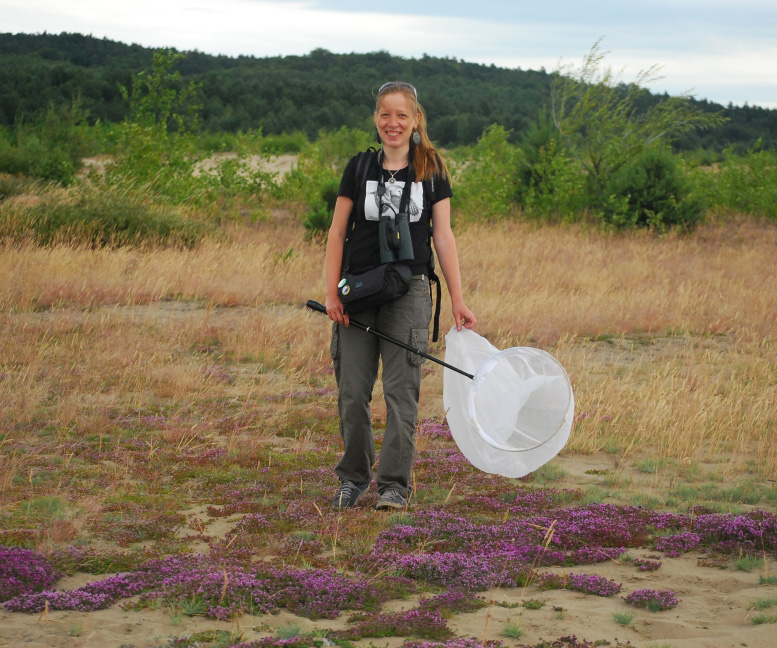
Agata Jirak-Leszczyńska
Professional ornithologist, Environmental Protection Specialist at Warta Mouth River National Park , also involved in ecological education.
Cooperation with Ojców National Park – bird monitoring
Master of Biology, The Jagiellonian University of Cracow, Biology and Geology, specialization: Conservation of Nature.
I believe, that the best way to understand nature is to see it as a network. All components of an ecosystem are mutually depended on each other, and understanding this interdependence is a key to developing appropriate conservation methods.
Monitoring wybranych gatunków ptaków z Załącznika I Dyrektywy Ptasiej w Ojcowskim Parku Narodowym w 2011 rokuPrądnik. Prace Muz. Szafera 25: 51-70 |
Abstract. The paper presents results of the monitoring of the numbers and density of four species of birds in the Ojców National Park in 2011, namely: Grey-headed Woodpecker Picus canus, Black Woodpecker Dryocopus martius, Collared Flycatcher Ficedula albicollis, and Corncrake Crex crex. The species are listed in the annex 1 of the EU Bird directive. |
|
Monitoring wybranych gatunków ptaków z Załącznika I Dyrektywy Ptasiej w Ojcowskim Parku Narodowym w 2012 rokuPrądnik. Prace Muz. Szafera 25: 71-88 |
Abstract. The paper presents results of the monitoring of the numbers and density of four species of birds in the Ojców National Park in 2012, namely: Corncrake (Crex crex), Honey Buzzard (Pernis apivorus), Ural Owl (Strix uralensis), as well as Harriers (Circus) during migration period: Marsh Harrier (Circus aeruginosus), Montagu’s Harrier (Circus pygargus), and Hen Harrier (Circus cyaneus). The species are listed in the annex 1 of the EU Bird directive. |
|
Within-patch mobility and flight morphology reflect resource use and dispersal potential in the dryad butterfly Minois dryasJournal of Insect Conservation, Volume 17, Issue 6, pp 1221-1228. |
Abstract Knowledge of mobility is essential for understanding animal habitat use and dispersal potential, especially in the case of species occurring in fragmented habitats. We compared within-patch movement distances, turning angles, resting times, and flight-related morphological traits in the locally endangered butterfly, the dryad (Minois dryas), between its old populations occupying xerothermic grasslands and newly established ones in wet meadows. We expected that the latter group should be more mobile. Individuals living in both habitat types did not differ in their body mass and size, but those from xerothermic grasslands had wider thoraxes and longer wings, thus lower wing loading index (defined as body mass to wing length ratio). The majority of movements were short and did not exceed 10 m. Movement distances were significantly larger in males. However, there was no direct effect of habitat type on movement distances. Our results suggest that the dryads from xerothermic grasslands have better flight capabilities, whereas those from wet meadows are likely to invest more in reproduction. This implies that mobility is shaped by resource availability rather than by recent evolutionary history. Lower female mobility may have negative implications for the metapopulation persistence because only mated females are able to (re)colonise vacant habitat patches efficiently. Conservation efforts should thus be focused on maintaining large habitat patches that prevent stochastic local extinctions. Furthermore, the recommendation of promoting the exchange of individuals among patches through improving matrix permeability, as well as assisted reintroductions of the species into suitable vacant habitats should also improve its conservation. |
|
Look deep into nature, and than you will understand everything better
Albert EinsteinMeander
I have been involved in nature conservation since my days at university. This involved participating in volunteer work, for example counting migrating birds in Tarifa, Spain (Short-toed eagle Circaetus gallicus, Booted eagle Hieraaetus pennatus) and carrying out scientific research aimed at the protection of the Dryad butterfly Minois dryas at Jagiellonian University. My master’s thesis was entitled “The effect of agri-environment schemes on meadow birds in the northern part of the Niepolomicka Primeval Forest”. Ornithology is closest to my heart but I am also interested in insects, especially Hymenoptera, Odonata and Coleoptera. I took part in the inventories of insect species from annex 1 and annex 2 of the EU Habitat Directive in two Natura 2000 areas, Pogórze Przemyskie and Góry Słonne.
I am employed in the conservation area of Warta River Mouth National Park, i.e. conducting bird monitoring. Before that I assisted at Ojców National Park, writing methodology and conducting bird monitoring. I also participated in research entitled “The effect of Snow Tree falls on selected groups of flora and fauna – Inventory of Vertebrate species, especially bird species from annex 1 of the EU Directive.”

Looking for wasps in Błędów Desert
